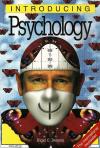Boekenkast

Introducing Psychology
Auteur | Nigel C. Benson |
Eerste Uitgave | 2000 |
Uitgave | 2000 |
Uitgeverij | Totem Books |
Vorm | non-fictie |
Taal | Engels |
Bladzijden | 176 bladzijden |
Gelezen | 2005-03-27 |
Score | 8/10 |
Inhoud
What is psychology? When did it begin? Where did it come from? How does psychology compare with related subjects such as psychiatry and psychotherapy? To what extent is it scientific?
Introducing Psychology answers all these questions and more, explaining what the subject has been in the past and what it is now.
The main "schools" of thought and the sections within psychology are described, including Introspection, Bio-psychology, Psychoanalysis, Behaviourism, Comparative (Animal) Psychology, Cognitive Approaches (including the Gestalt movement), Social Psychology, Developmental Psychology and Humanism. The key figures covered include: Freud, Pavlov, Skinner, Bandura, Piaget, Bowlby, Maslow and Rogers, as well as many lesser-known but important psychologists.
This book is the ideal introduction for students of the subject and for anyone interested in psychology.
Bespreking
Enjoyable and complete introduction to psychology
Introducing Psychology tries to give a basic overview on what psychology is all about. It starts with a general definition and sets off on a trip through the history of psychology and its numerous sections, including: Psychoanalysis, Behaviourism, Biopsychology, Social Psychology and Humanism. The main figures that had an influence on the course of psychology are all briefly discussed. The impact of names like Pavlov, Maslow, Jung and Freud is described to more extend.
The story brought by the author is easy to digest without actually neglecting the more difficult concepts. Because this book must clearly be seen as a first glimpse into the fascinating world of psychology, it does not dive too deep into the subjects, but highlights the basic ideas. Further reading is clearly encouraged by making strong recommendations for books to read. As extra further information on how to start the study of psychology is given.
The main assets of this book -and the whole series for that matter- are the tongue-in-cheek illustrations. Although sometimes the depictions are quite absurd, they do help in bringing the reader better understanding of the concepts explained in the text. But even more important, they make this clever book a joy to read.
Introducing Psychology is a must read for everyone who shows interest in the area of psychology and its applications.